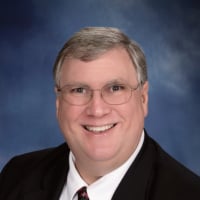SmartSDR v4.1.3 | SmartSDR v4.1.3 Release Notes
SmartSDR v3.10.15 | SmartSDR v3.10.15 Release Notes
The latest 4O3A Genius Product Software and Firmware
Need technical support from FlexRadio? It's as simple as Creating a HelpDesk ticket.
FSK Feature Request
Comments
-
Well, (quite) a few years ago, I would not buy a rig without true FSK. The reason is that in those days, all the external audio stuff was prone to ground loops when using AFSK. True FSK helped to eliminate that as a source of poor signal quality.
In today's world, an external box for FSK/AFSK generation is not needed. Especially with the Flex and the DAX capability, a software-based digital solution never passes audio over external cabling - it is all digital in the computer. This completely eliminates the possibility of ground loops (at least from this source). This then means that very clean AFSK is generated every time, assuming that you don't overdrive the audio.
I would like to see true FSK added to the Flex 6000 series just be compatible with older equipment, but I do not see it as the show stopper that it once was.
What is your reasoning for wanting true FSK as opposed to AFSK using DAX?
1 -
I have been honored to do the RTTY presentation that is part of the W9DXCC Contest University since 2015. See https://w9dxcc.com/dx-contest-universities/
In my presentation, I have always acknowledged that FSK vs. AFSK is one of the most controversial and debated topics in all of ham radio. And consequently I have covered both technologies in my presentation and also taken an agnostic view as to which is better.
But, deep down in my heart of hearts, I was an FSK-guy. It is what I used, going back to my first RTTY QSO in 1998. That is, until I purchased a Flex 6600 and had to switch to AFSK because FSK had not been implemented in the radio. The lack of FSK in the Flex was almost a deal breaker arguing against buying the radio, but at the end of the day the reasons to buy outweighed the reasons not to buy, so with lots of grumbling I became an AFSK guy. We are all resistant to change to some degree and that seems to be particularly true when it comes to FSK vs. AFSK, myself included.
Big news flash: I am changing my approach for my 2021 presentation and recommending new RTTY operators who are just getting started with RTTY contesting start with AFSK if their radio can handle it.
Part of this change in recommendation is borne out of my experience using AFSK with my 6600: It can easily be done and with excellent results. But part of this change is also borne out of the FT8/FT4 phenomena: If you have a radio and computer setup that you currently use with FT8, then you probably have a radio and computer setup that can be used for RTTY without the need to make any hardware changes. If that’s the case, it makes no sense to try to implement FSK as you get started with RTTY. As Len KD0RC suggests, why spend time and money for something that, in a digital audio environment, provides no benefit?
Ronboomer, in his original post, asks us to speak up if we are interested in FSK for the Flex. I have a list of other Flex hardware and software issues I would like to see addressed. While I would not object to FSK be available in the Flex radios (I would not use it but have no objections to others using it) I would strongly object to any of Flex’s programming resources being consumed to implement FSK while other issues that are significantly more pressing to me are left unaddressed.
Tim K9WX
2 -
I agree with everything that Tim says. I have used both methods over the years. Once I switched to Flex I have never had a desire to use FSK even if were available. During RTTY contests I hear (and see) signals that produce clicks that are audible well away from the actual signal. I would bet that these signals are being generated via FSK means. There are, of course, bad signals that are the product of over-driven AFSK signals.
I believe that the Flex is capable of generating a FSK signal via AFSK techniques that is as good or better than some true FSK rigs. AFSK has a bad reputation because it requires some additional attention on how the transmit audio levels are set and how the interconnections are made. You still need to set the audio level correctly on the Flex but the connection issue is made moot thanks to DAX.
Take a look at Kok Chen's (W7AY) article on the subject.
http://www.w7ay.net/site/Technical/RTTY%20Sidebands/sidebands.html
73, Mark K5XH
1 -
Hi Ron (I think that is your name)
I passed this on to Steve Hicks as he requested.
73
1 -
I've been doing RTTY for over 50 years. I hold RTTY (not "digital") DXCC certificate #317 from the days when you had to own a couple hundred pounds of noisy machinery to pursue RTTY.
In the early years AFSK was not practical for several reasons. Using an SSB transmitter for AFSK requires excellent carrier and opposite sideband suppression. That was not a common occurrence. -30db was a common spec and that's not really that good. It's not a problem on SSB as long as you stay away from the band edges with your opposite sideband, but, it leads to an unacceptable signal down in the CW portion. Collins S line and others that were pretty good in that regard did not like the 100% duty cycle of RTTY. The linear output stages were less efficient than the class C finals of a CW or plate modulated AM rig. More heat plus the duty cycle tended to release smoke at the weakest point in the circuit. And generating the tones with sufficient spectral purity for AFSK was a non-trivial problem back in the day, too.
Your best bet was a burly AM/CW rig that was modified for FSK. I helped dozen of others modify their rigs for FSK for MN Army MARS back in the day as the Army provided teleprinters to MARS participants.
As technology progressed, rigs got better, audio got cleaner but many rigs started to provide an FSK mode and input so AFSK still wasn't used. Fun fact though: The FSK input on many radios from major manufacturers was actually keying a built-in AFSK tone generator and using SSB mode to transmit those tones. There's an excellent chance that you've actually been using AFSK all along!
The Flex radios transmit AFSK with excellent spectral purity as long as you don't over-drive the audio input. Even that is made easy by using your own receive display. As you increase your audio level you'll see a point where numerous spikes appear around the carrier. Back off the audio just a bit until they disappear and your good to go.
1 -
0
-
The "TRUE FSK is always cleaner than AFSK" argument is a MYTH.
It depends upon HOW the frequency shift is generated. If the frequency shift happens in a way that is not "clean" then the frequency shift can produce the equivalent of CW "Clicks" and broaden the bandwidth.
If the frequency synthesizer generates phase noise during the frequency shift, then the noise will be superimposed on the RTTY signal.
AFSK is not always dirty, in fact it cane be indistinguishable from "true" FSK IF:
1) The audio initially generated by the RTTY modem or software is clean itself.
2) The audio chain in the transmitter is clean,
3) the Transmit Filters do not add any phase distortion.
4) The transmitter audio is not being overdriven.
5) The PROCESSOR is turned OFF.
6) There are not ground loops or other sources of hum or noise in the modem-transmitter chain.
The Flex 6000 series is firing on all 6 cylinders here, if you are using a digital program and running in DIGU or DIGL mode.
The Digitally generated AFSK signal is sent by digital means to the radio modulating circuit and everything stays in the digital realm until the RF is generated as an RTTY signal. It is never turned into audio and then modulated back into RF. So virtually all of the usual concerns regarding AFSK are eliminated right from the start.
The beauty is that there are NO other cables or interface boxes required, which means that there are fewer chances of running into wiring, ground loop, or RF problems with this system.
I HATED trying to work RTTY before I got my 6500 and set up MMTTY for the first time with DAX.
The Flex made a RTTY lover out of me, and that was 6 years before I started to work here!
3 -
What Ken Said!
1 -
AND, properly done, there is no difference at the receive end, where it counts.
1
Leave a Comment
Categories
- All Categories
- 378 Community Topics
- 2.1K New Ideas
- 630 The Flea Market
- 8.2K Software
- 116 SmartSDR+
- 6.4K SmartSDR for Windows
- 183 SmartSDR for Maestro and M models
- 428 SmartSDR for Mac
- 271 SmartSDR for iOS
- 258 SmartSDR CAT
- 191 DAX
- 382 SmartSDR API
- 9.3K Radios and Accessories
- 37 Aurora
- 255 FLEX-8000 Signature Series
- 7.2K FLEX-6000 Signature Series
- 945 Maestro
- 55 FlexControl
- 865 FLEX Series (Legacy) Radios
- 923 Genius Products
- 462 Power Genius XL Amplifier
- 336 Tuner Genius XL
- 125 Antenna Genius
- 297 Shack Infrastructure
- 209 Networking
- 458 Remote Operation (SmartLink)
- 144 Contesting
- 787 Peripherals & Station Integration
- 139 Amateur Radio Interests
- 1K Third-Party Software






